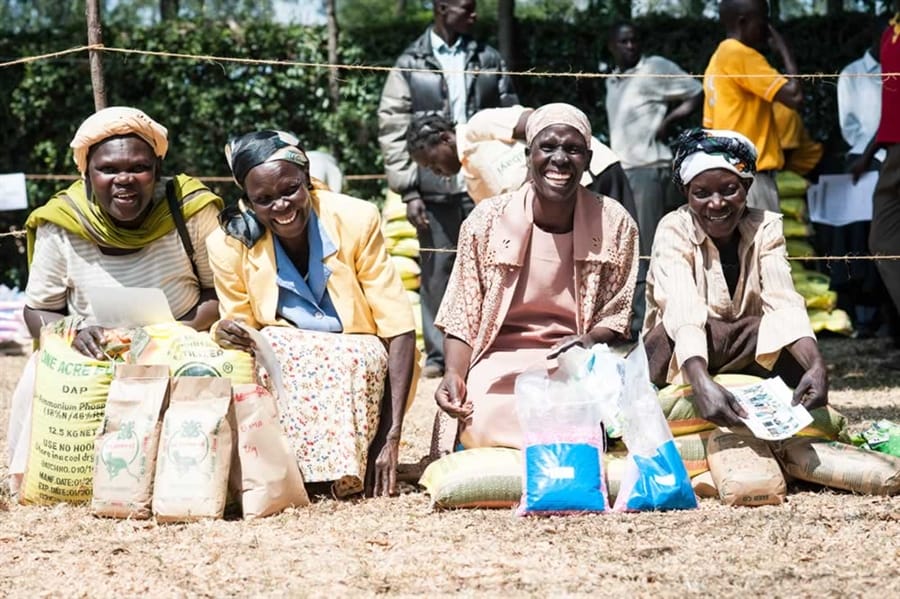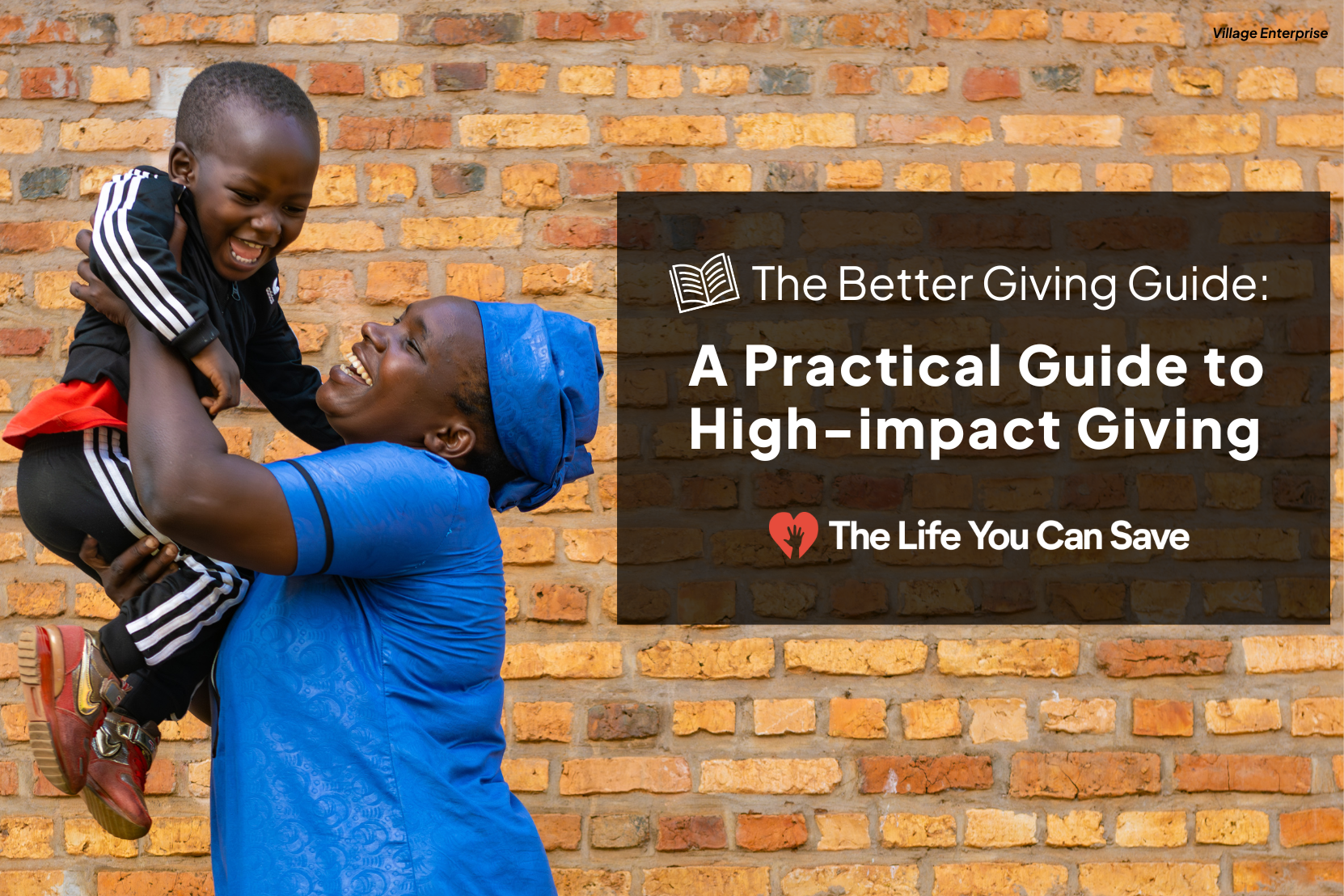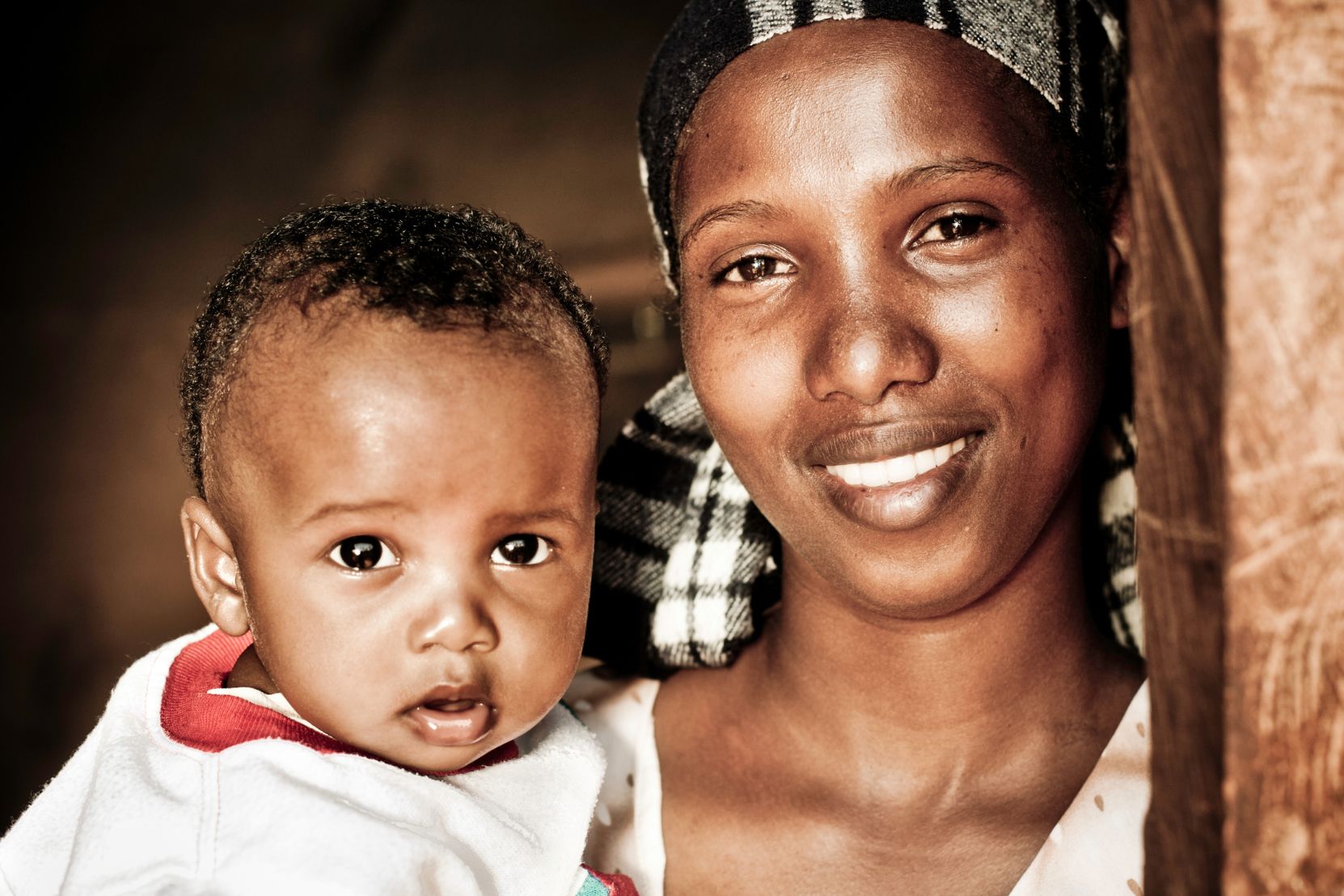A letter from our Executive Director
Dear Subscribers and Followers of The Life You Can Save,
Our 2016 Annual Report chronicles our ongoing growth, which would not be possible without our talented core Team and our skilled volunteers. Nor would it be possible without all of you who have generously donated to our Recommended Best Charities as well as those who have financially supported TLYCS itself over the past few years. And last, but certainly not least, we are indebted to Peter Singer for his ongoing advocacy on behalf of the global poor and his enthusiasm for and help with the development of The Life You Can Save as an organization.
In completing my fourth year as volunteer Executive Director, I feel comfortable with our cumulative accomplishments and with the results reported here for 2016. However, we strive to have a much greater impact in helping our Recommended Best Charities reduce needless suffering and premature death among the global poor and in changing the cultural norms associated with giving. Our 2017 Strategic Plan outlines where we want to go from here and how we plan to achieve our desired greater impact.
Finally, and perhaps most of all, I want to thank the women and men who work with all eighteen of our recommended nonprofits throughout the world. Your creativity and perseverance help to mitigate the many injustices that happen to people simply as a function of where they are born.
We are looking forward to a great 2017 and your continued support.
Good giving and good living!

Charlie Bresler
Executive Summary
This Annual Report describes The Life You Can Save’s work and its impact over the course of 2016. Highlights of our results were:
- We moved $2.7 million to our recommended nonprofits in 2016, while spending ~$300,000 on our operating expenses. This means that for every dollar we spent, we raised ~$9 for our top nonprofits.
- Growth was strong in key metrics. Total Money Moved was up 72% relative to 2015, while our Net Impact (Money Moved net of expenses) increased by 86%.
- We made significant progress in developing working relationships with value-aligned groups and individuals. These sorts of partnerships amplify our reach and expertise, and are an essential part of our plan to scale. To support our future growth, we made major enhancements to our infrastructure: we overhauled our donation process, codified and strengthened our charity selection process, and upgraded our donor stewardship process.
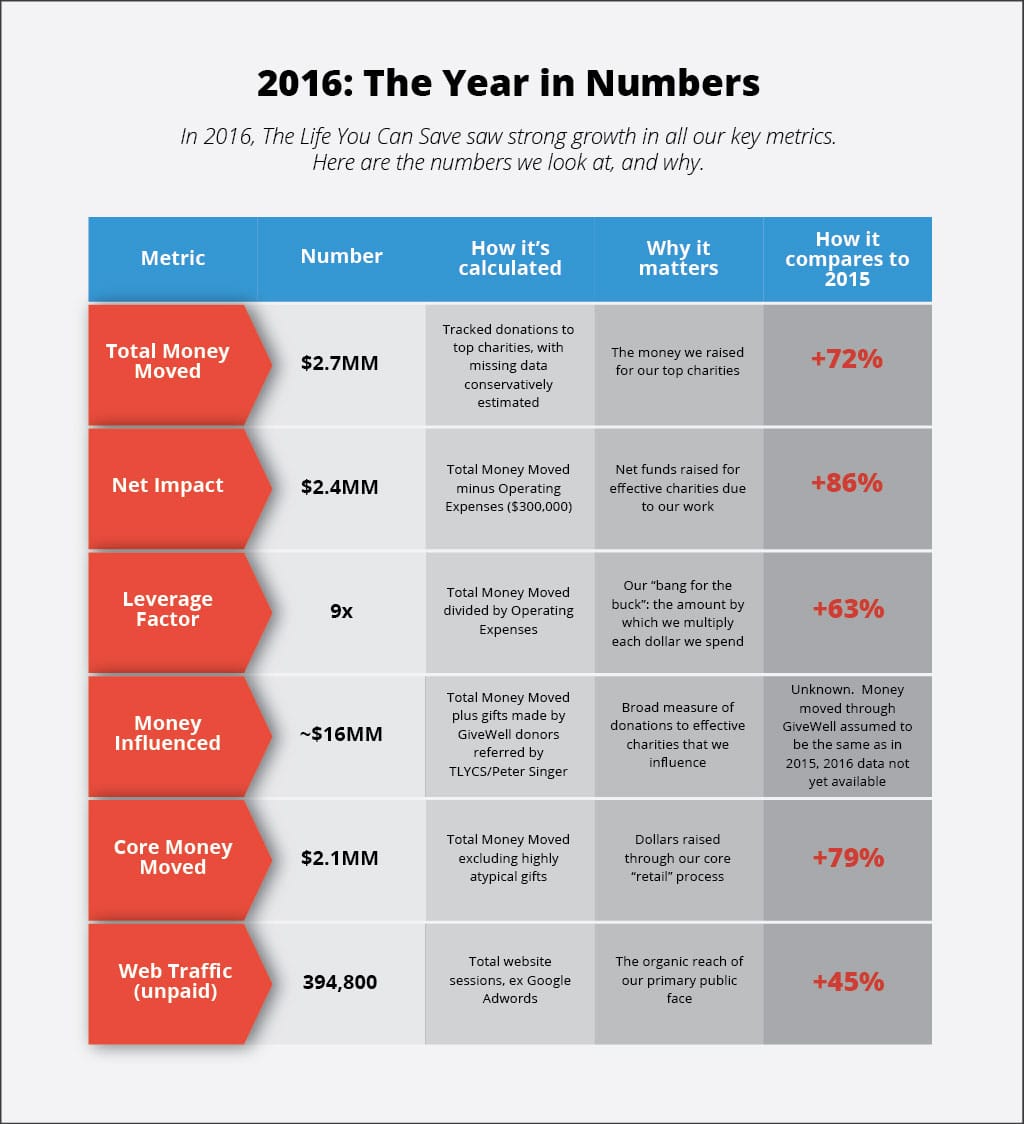
How the numbers inform our strategy… and how they don’t
Our goal is to move as much money to effective nonprofits as possible while spending as little as possible, both over the long run. Two of our metrics reflect this relationship between our benefits and our costs: Net Impact subtracts our operating expenses from our Money Moved, while our Leverage Factor expresses these numbers as a benefit/cost ratio. Both these metrics grew significantly in 2016, continuing our long-term trends.
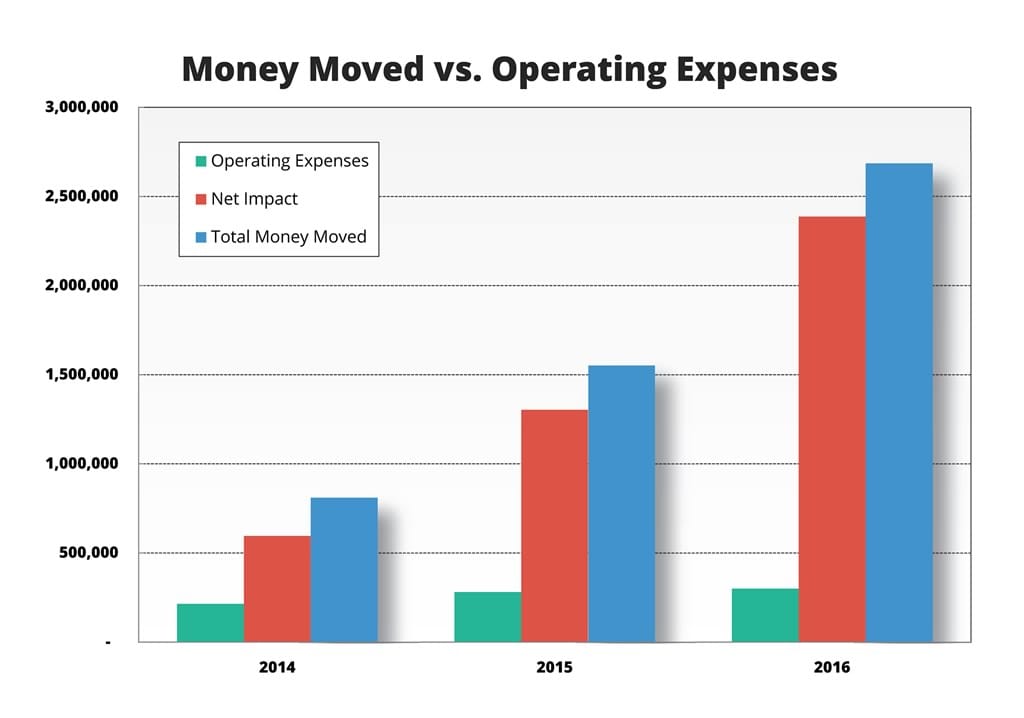
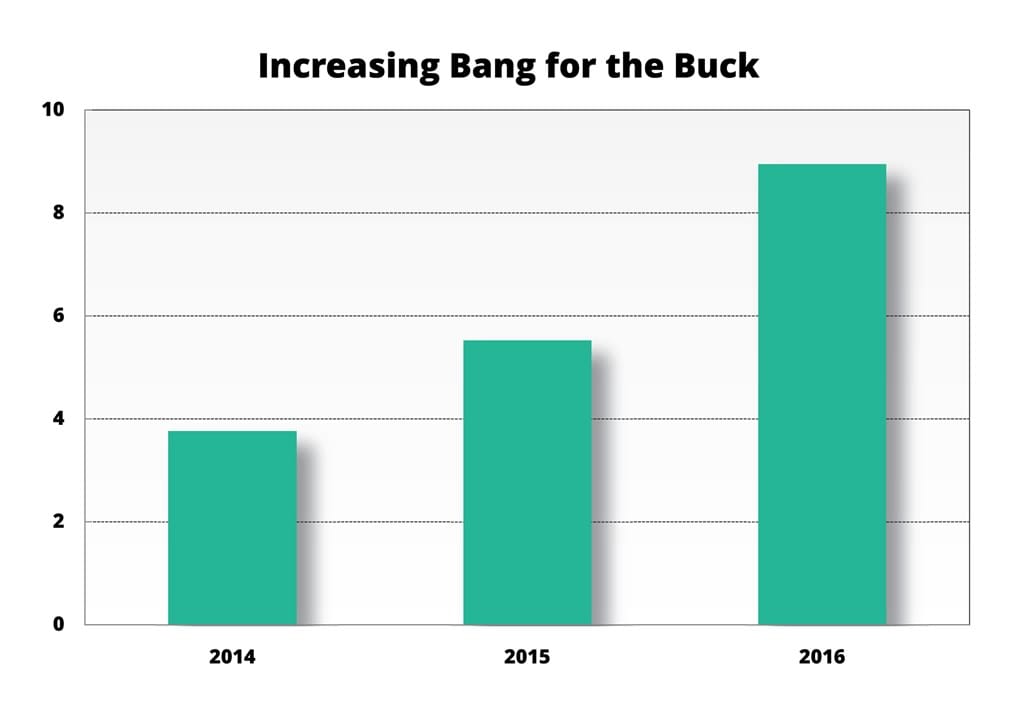
Net Impact is conceptually our most important metric, as it represents the money that will go to help people in extreme poverty because of our work. If The Life You Can Save didn’t exist, our recommended nonprofits would receive none of the money we raise, but they’d likely get the vast majority of the money used to fund our operational expenses[1]. Net Impact captures this dynamic.
We also want to ensure that we’re delivering significant bang for the buck, which our Leverage Factor measures. When we’re considering whether a specific opportunity meets this threshold, we make the evaluation on a sliding scale. The higher the potential Net Impact, the more we're willing to tolerate a lower Leverage Factor. This is a critical subtlety, as we believe some opportunities that offer only moderate leverage have the greatest potential to scale. For instance, many traditional marketing channels (TV ads, print ads, digital marketing) could potentially be used to steer vast sums of money toward effective nonprofits, but at a much lower multiplier than less scalable forms of outreach. So somewhat counterintuitively, we’d actually like to see our Leverage Factor decline over time if that change were driven by a dramatic expansion of our total impact.
While our other metrics don't incorporate the cost of our operations, they provide valuable perspectives:
Total Money Moved includes all the donations we are highly confident we directly influenced. We believe this metric is a conservative representation of our impact, as our measurement fails to capture some donations we know are occurring.[2]
Money Influenced is a broader measure of our impact. It includes money given to effective nonprofits through GiveWell by donors who were referred there by The Life You Can Save or Peter Singer. We know we played a role in these donations, but we’re not sure how big a role that is. Therefore, we’ve chosen to exclude these gifts from the majority of our metrics. However, we view amplifying GiveWell’s work as a great opportunity to still make an impact, so we use Money Influenced to track this perspective.
Core Money Moved and Web Traffic each measure key intermediate outcomes that will drive our long-run success. These metrics help us understand critical components of our strategy, and provide warning if signs of problems emerge.
As valuable as we find this collection of metrics, they all share the same problem: they tell us where we are and where we've been, but not where we're going. Recall that our goal is to maximize our long-term impact. As a young and growing nonprofit, most of that impact will take place in the future. Since all of our metrics are backward-looking, they neglect the future entirely.
One way we mitigate this issue is by focusing more on growth rates (both short and long term) than on the absolute levels of our metrics. Looking at our trajectory lets us extrapolate into the future.
More fundamentally, we don't make decisions with an aim toward maximizing short-term metrics or even short-term growth. Doing so would lead us to systematically forego opportunities to make short-term investments with significant long-term rewards.
In fact, these are precisely the sorts of investments we believe will fuel our long-run impact. Our Giving Game Project is a great example. In it, we run philanthropy education workshops, primarily with university students. Teaching this audience about effective philanthropy offers the opportunity to influence an entire lifetime of giving. To learn more about the benefits of this work, which don’t show up in our metrics, we invite you to read The Giving Game Project’s Annual Report.
As you'll see in our review of the year’s highlights, much of our effort in 2016 was spent making progress that doesn't show up in our metrics, while those 2016 numbers partially reflect groundwork laid in the past.
Highlights of 2016
Partnerships and infrastructure were key areas of focus throughout the year, as we view these as critical to our long-term growth strategy. We saw excellent progress on both fronts.
Partnerships
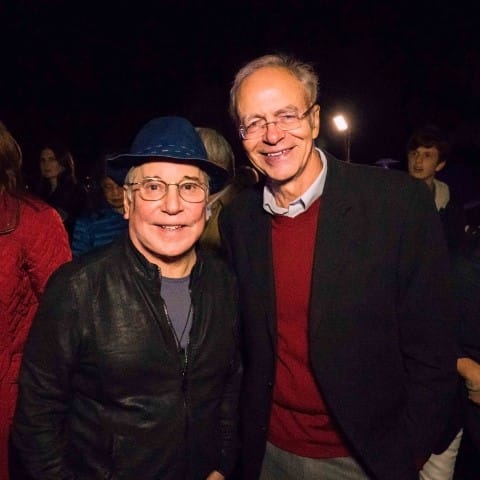
Our founder Peter Singer with Paul Simon at our October benefit concert.
You’re probably familiar with one partner in particular, as he’s a household name. We’re honored to thank the legendary musician Paul Simon for performing at our benefit concert. The event was hosted by our generous supporters Julie and Carlo Panaccione, and guests were treated to a magical and unique musical experience. The concert proceeds will provide much of The Life You Can Save’s operational funding for 2017 and many attendees became new supporters of our organization.
In October, our founder Peter Singer gave a keynote speech at a behavioral ethics symposium at Harvard University. Afterwards, The Life You Can Save’s leadership spent a day meeting with a consortium of academics from local institutions. These researchers study giving behavior and aim to find interventions that will make people more likely to give to effective nonprofits. The day was spent brainstorming and laying the groundwork for future collaboration. Many of our new partners have joined our advisory board, and we’ve already begun experimentation.
Our collaboration with MediaMath, a leading digital marketing firm, is a great example of the corporate partnerships we're developing. MediaMath approached us with a generous offer to donate their expertise and funding to run a marketing campaign on behalf of an effective charity. Their belief, which we strongly share, is that nonprofits can benefit from investing in marketing the same way for-profit organizations do. We connected MediaMath with GiveDirectly, and they collaboratively designed a campaign which ran during giving season. GiveDirectly conservatively estimates that these ads produced $175,000 in donations. This collaboration also produced valuable data on which types of ads worked best; we’ll use this information to guide future marketing efforts.
We’ve partnered with One for the World, a like-minded organization founded at the University of Pennsylvania’s Wharton Business School, to become their fiscal sponsor. This means that officially, One for the World is now part of The Life You Can Save, though they’ll operate independently. Their goal is to expand around the world, influencing thousands of students to practice conscious and thoughtful giving in order to increase money raised for effective nonprofits in the most efficient manner possible. They plan to reach 100 schools and raise millions of dollars per year by 2021. They share our Panel of Experts and are already raising money for our recommended nonprofits. We anticipate natural synergies with The Giving Game Project and other areas as One for the World pursues its aggressive expansion plans.
We have other, potentially transformative, partnerships in the pipeline. These opportunities have grown in tandem with the more quantitative metrics discussed above, and adding capacity in partnership development is our priority as we look to expand our lean team.
Infrastructure
In late May, we began processing donations directly through our site using the Network for Good giving platform. In the short-term, this change provides a dramatic improvement to our user experience (for instance, allowing donors to give to multiple nonprofits in a single transaction or to run a peer-to-peer fundraiser) and allows us to more precisely track the donations we influence. In the long-term, even greater benefits will come from the additional information we’re now able to capture. In the past, when people donated through our nonprofits’ websites rather than our own, it severely limited both our knowledge about our audience and our ability to communicate with them.
Having access to this granular donation data is a crucial foundation for our long-term plan to provide a customized world-class user experience for our audience. Our vision is to provide donors the ability to track their giving, receive personalized feedback on the impact of their gifts, and set and track their goals. By tailoring our audience communications based on their giving history, we expect to significantly improve both our value proposition and our impact.
To take advantage of the new information we’re capturing, we’ve been building out our technical infrastructure. This includes building pipelines that route all the data we need to the same place and designing tools that make it easy for us to see important information. Better information allows us to make better decisions, based on sound evidence. In this spirit, we’ve built dashboards and designed monitoring processes that allow us to track key numbers in close to real time. These dashboards help us keep accurate track of our progress, while also alerting us if problems emerge in particular areas.
We’re already reaping the benefits of some of these improvements. By integrating our donation process with our website analytics, we’ve significantly upgraded the precision with which we understand the drivers of our audience’s giving. For instance, we can now track donations attributable to a specific landing page on our site, referral traffic from a particular media mention, or contributions from a specific geographic area. And we’ve also added sophistication to our audience communications by developing tools that allow us to personalize messaging based on increasingly complex logic.
Not all the infrastructure we built was technical in nature. Our list of recommended nonprofits underlies most of our work, and throughout the year we worked on shoring up this foundation. The result was our new charity selection process, which was announced at the beginning of giving season.
Our Panel of Experts

Caroline Fiennes

Eric Friedman

Dean Karlan

Peter Singer
This new process transitions responsibility for our recommendations to a Panel of Experts we’ve formed–including leaders in economics, ethics, nonprofit management, and business–which will leverage the best charity evaluation research available. We hope you’ll take some time to learn more about the details of our new process and the rationale behind it, but the takeaway is that our charity selection is more reliable, systematic, and transparent than ever.
The benefits of selecting nonprofits in a smarter way are significant: it means our donors can give with more impact and more confidence. A hidden benefit of this change is that it allows our lean team to focus on other priorities. By utilizing the charity evaluation expertise of outside organizations and individuals, our core staff can concentrate on raising money for outstanding nonprofits and growing the effective giving community.
Closing Thoughts
Much of this report has focused on growth: how much we've grown so far and the foundation we’re laying for future growth. But in all the discussion of metrics, growth rates, and infrastructure, it's easy to forget that these are all means toward an end. Our work only has value to the extent that it creates meaningful improvement in the lives of the global poor. We want to grow because the scope of extreme poverty demands a dramatically larger response than it currently receives.
We're inspired to be connected to so many people who are joining in the fight against global poverty. Anyone would leap into action if they happened upon a child drowning in a pond. But when the person who needs our help lives half a world away, far too few are willing to come to their aid. Thank you for being one of those taking action; the lives you can save are lives worth saving.
————————
[1] The Life You Can Save’s funders typically support us as a way to leverage their giving to help the global poor. If we weren’t around, it’s reasonable to assume these funders would generally support effective nonprofits providing direct services to this population.
[2] For details on the methodology we use in our metrics, please see our writeup How We Calculate Our Impact
